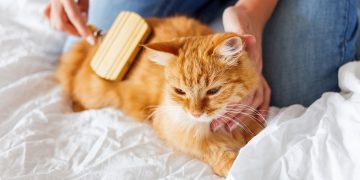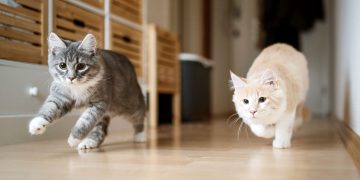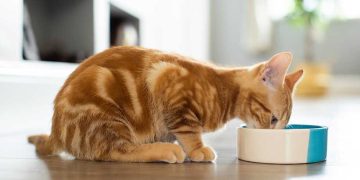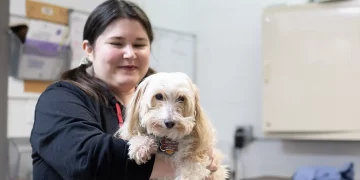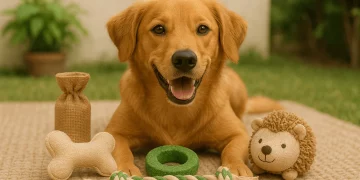Indoor Cats, Complex Minds
Indoor cats may seem calm and low-maintenance, but behind those blinking eyes and gentle purrs lies a deep reservoir of instinct, curiosity, and learning potential. Many cat owners underestimate how intelligent and behaviorally complex their feline companions are, especially when it comes to training. The good news? You don’t need strict routines or clicker drills to teach your cat important behaviors. You need play.
Specifically, enrichment toys—those puzzle feeders, rolling balls, dangling feathers, and hidden treat challenges—have emerged as one of the most powerful tools for feline training. These toys don’t just entertain; they stimulate a cat’s natural hunting instincts and create consistent opportunities for positive learning. By using enrichment toys as both motivators and learning aids, indoor cats can be trained faster, more effectively, and with far less resistance.
The Feline Learning Mindset
Unlike dogs, who are traditionally eager to please and responsive to commands, cats are independent learners. They engage best when they’re curious, challenged, or rewarded with something that aligns with their natural instincts—like movement, scent, texture, or taste. Training for cats isn’t about “sit” and “stay.” It’s about shaping desirable behaviors such as coming when called, using scratch posts, avoiding countertops, and tolerating handling or grooming.
Because cats aren’t as food-driven in the traditional sense, many of the typical reinforcement strategies used in dog training fall flat. But when you disguise that reinforcement in play—especially through interactive or puzzle-based enrichment—something clicks. Suddenly, learning becomes part of the hunt, and cats start associating human-led sessions with fun, fulfillment, and reward.
Why Enrichment Toys Are Training Accelerators
Enrichment toys help increase training results in several distinct ways:
- They Focus Attention: Toys that require a cat to chase, swat, pull, or paw bring them into a state of heightened focus. This state mimics the mental concentration they’d need for hunting in the wild—and it’s the same concentration required for successful training.
- They Motivate Repetition: Cats are unlikely to repeat a behavior just because we ask. But if the behavior leads to something fun—like the appearance of a dangling mouse or a snack ball that rolls across the floor—they’ll happily do it again. Repetition is the bedrock of training, and toys make it natural.
- They Lower Stress Thresholds: Many indoor cats experience low-grade boredom or anxiety, which can inhibit learning. Toys reduce that mental fog by offering structured stimulation. The happier and more mentally balanced your cat is, the more receptive they’ll be to new experiences and commands.
- They Offer a Reward Loop: Training is more effective when the reward is clear, immediate, and satisfying. A rolling treat ball that dispenses kibble or a toy that squeaks and bounces on pounce is more engaging to a cat than a stationary treat dish.
- They Turn Training into Playtime: The greatest barrier to cat training isn’t intelligence—it’s willingness. Enrichment toys shift the dynamic from work to play, making cats more eager participants and less resistant to human-guided tasks.
Types of Enrichment Toys and How to Use Them for Training
1. Puzzle Feeders and Treat Dispensers
These are toys that make your cat work for their food, often by pushing, tapping, or spinning compartments to reveal kibble or treats. They’re excellent for training impulse control and rewarding curiosity.
Training use: Encourage your cat to come when called by placing a treat-dispensing ball near you. Say their name, roll the toy, and praise when they chase it. Over time, they’ll associate their name with fun and reward.
Bonus: Puzzle toys slow down fast eaters and provide longer-lasting engagement during meals.
2. Feather Wands and Teasers
Classic interactive toys that mimic prey movement. These are essential for energy release and attention redirection.
Training use: Use a teaser wand to reinforce “stay off the counter” training. When your cat approaches a forbidden surface, redirect their attention with the wand. Reward when they engage with the toy on the floor instead.
Bonus: Wands are a great way to teach targeting and encourage cats to follow cues without force or punishment.
3. Scent and Foraging Mats
These mats hide kibble or treats within folds of fabric or small pockets, encouraging sniffing, pawing, and foraging.
Training use: Place the mat near a scratching post or litter box to build positive associations with those spaces. If your cat has avoidance behaviors, the scent mat can act as a gentle nudge toward preferred actions.
Bonus: These are ideal for cats recovering from injury or older cats who need gentler activity.
4. Motion-Activated Toys
Battery-operated mice, rolling balls, or laser toys that respond to your cat’s touch or movement.
Training use: Incorporate them into routines that teach schedule adherence or crate training. For example, activate the toy after your cat enters the crate voluntarily, associating the space with motion, intrigue, and reward.
Bonus: These toys can be used when the owner isn’t home, reinforcing self-led play without reinforcing separation anxiety.
5. DIY Enrichment
Simple boxes, paper bags, or egg cartons filled with dry kibble or crinkly paper make great budget-friendly training tools.
Training use: Train your cat to approach, explore, or even retrieve small items by hiding treats inside. Use a clicker or verbal cue to reinforce progress.
Bonus: DIY options keep things novel and customizable to your cat’s play preferences.
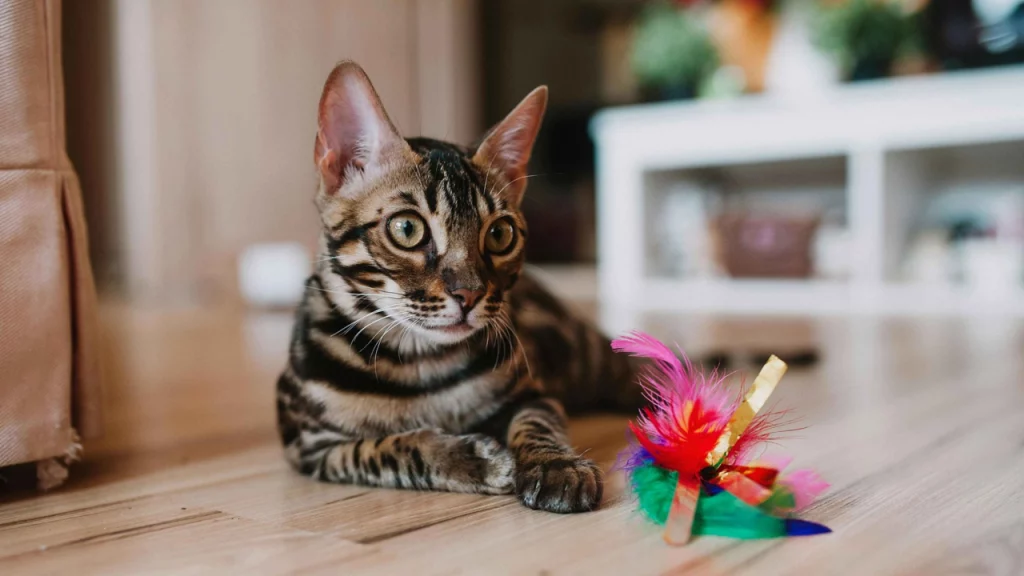
Making Training a Daily Habit Through Play
One of the biggest mistakes owners make is separating training time and playtime. With cats, those two experiences should be woven together. Every morning or evening, devote 10–15 minutes to active enrichment play that incorporates basic cues like:
- Name recognition
- Touching a target (like your hand or a mat)
- Entering a crate or bed
- Coming when called
- Responding to sound cues (like a clicker or specific word)
These cues don’t have to be military-precise. Instead, think of them as building blocks to help your cat feel more connected and confident in your shared environment. Play builds trust. Trust builds trainability.
Behavioral Benefits Beyond Obedience
The positive behavioral outcomes of enrichment training go far beyond “sit” or “stay.” Cats who receive structured enrichment tend to:
- Exhibit fewer signs of anxiety or aggression
- Reduce furniture scratching or inappropriate elimination
- Become more social and open to human touch
- Experience fewer nighttime zoomies or yowling
- Maintain healthier body weight and cognitive function
That’s because training through toys engages both body and brain. It creates feedback loops that fulfill instinct while also aligning with your house rules. Over time, cats learn that good things come from following your lead—and those good things are fun, not fear-based.
Adapting to Personality and Energy Levels
Not every cat responds the same way to toys. Some are food-focused, others are movement-focused, and a few may need extra encouragement to engage. The key is experimenting without forcing. Offer several toy types and observe what draws the most enthusiasm. Then tailor your training sessions around those preferences.
- Shy cats may prefer solitary toys or quiet sniff mats
- High-energy cats need chase-based toys with rapid feedback
- Food-driven cats thrive with treat puzzles and dispensers
- Older cats may enjoy slow, interactive grooming toys with treat reinforcements
By meeting your cat where they are, you honor their nature while shaping behavior.
Avoiding Overstimulation and Frustration
While enrichment toys are powerful training aids, overuse can lead to overstimulation or frustration. Watch for signs your cat is getting overwhelmed, such as tail thrashing, dilated pupils, hissing, or rapid licking. End sessions on a positive note before frustration kicks in.
Rotate toys every few days to keep things fresh. Avoid leaving all toys out at once, as novelty is part of the magic. And never use toys as a substitute for attention—they’re supplements, not replacements, for your presence and praise.
Conclusion: Enrichment as Everyday Education
Enrichment toys are more than entertainment for indoor cats—they’re tools for transformation. By weaving training into playful, stimulating experiences, you unlock your cat’s ability to learn, connect, and thrive. You don’t need rigid routines or strict rules. You just need patience, creativity, and the willingness to turn everyday moments into learning opportunities.
Cats want to be engaged. They want to solve, swat, hunt, and discover. With the right enrichment toys and a little intention, you can teach your cat everything from manners to movement—all while keeping them entertained, confident, and happy in your shared space.



